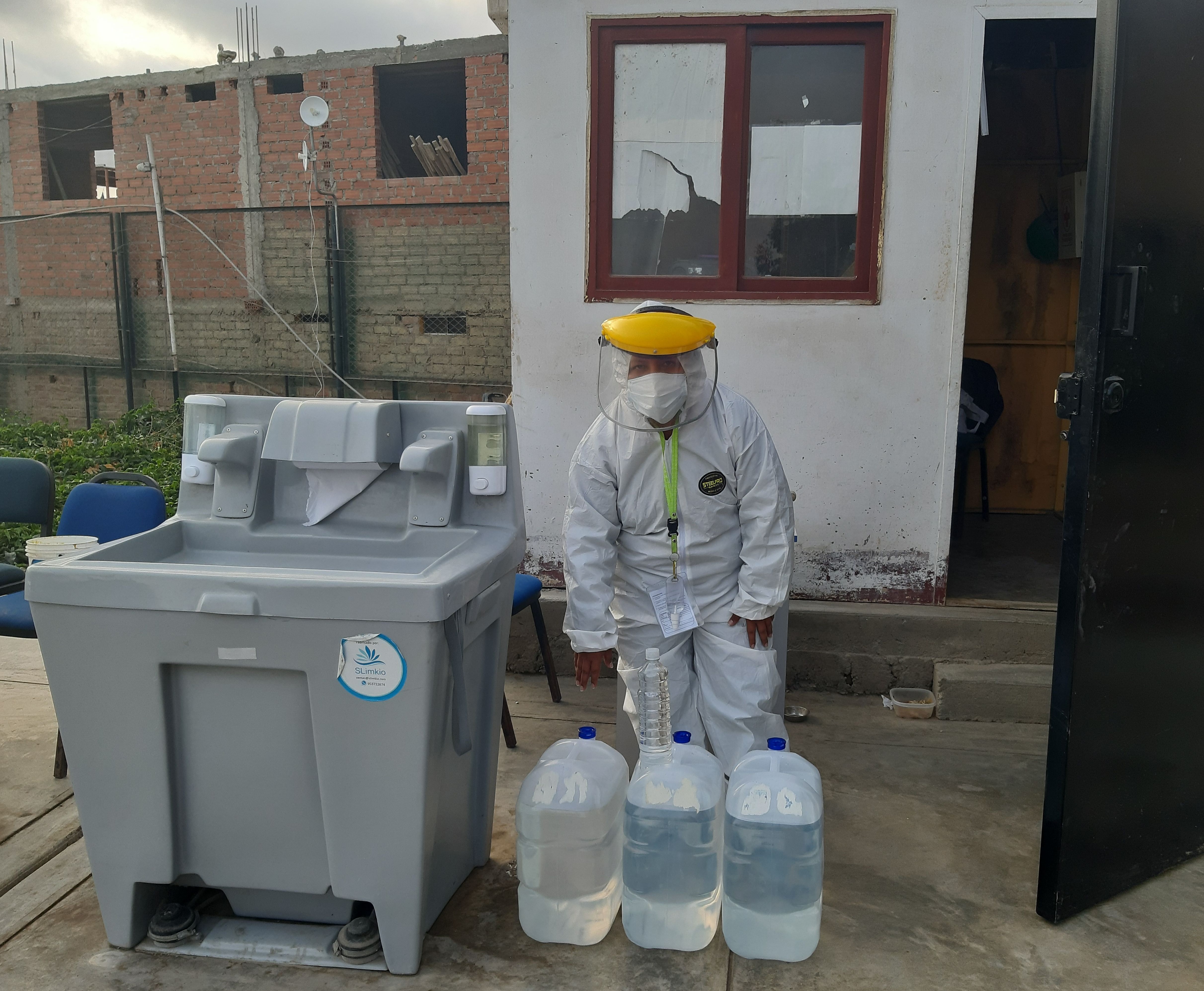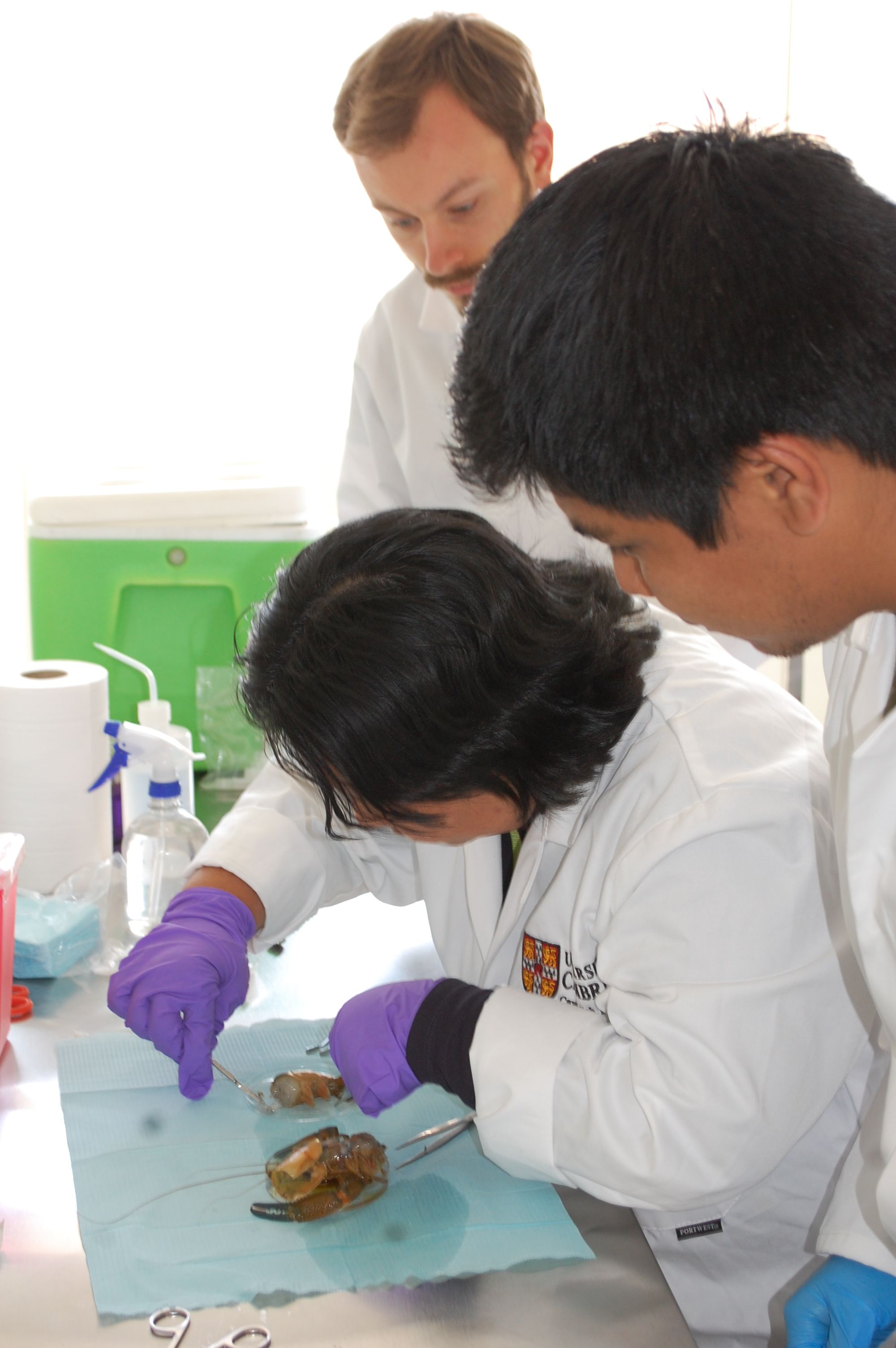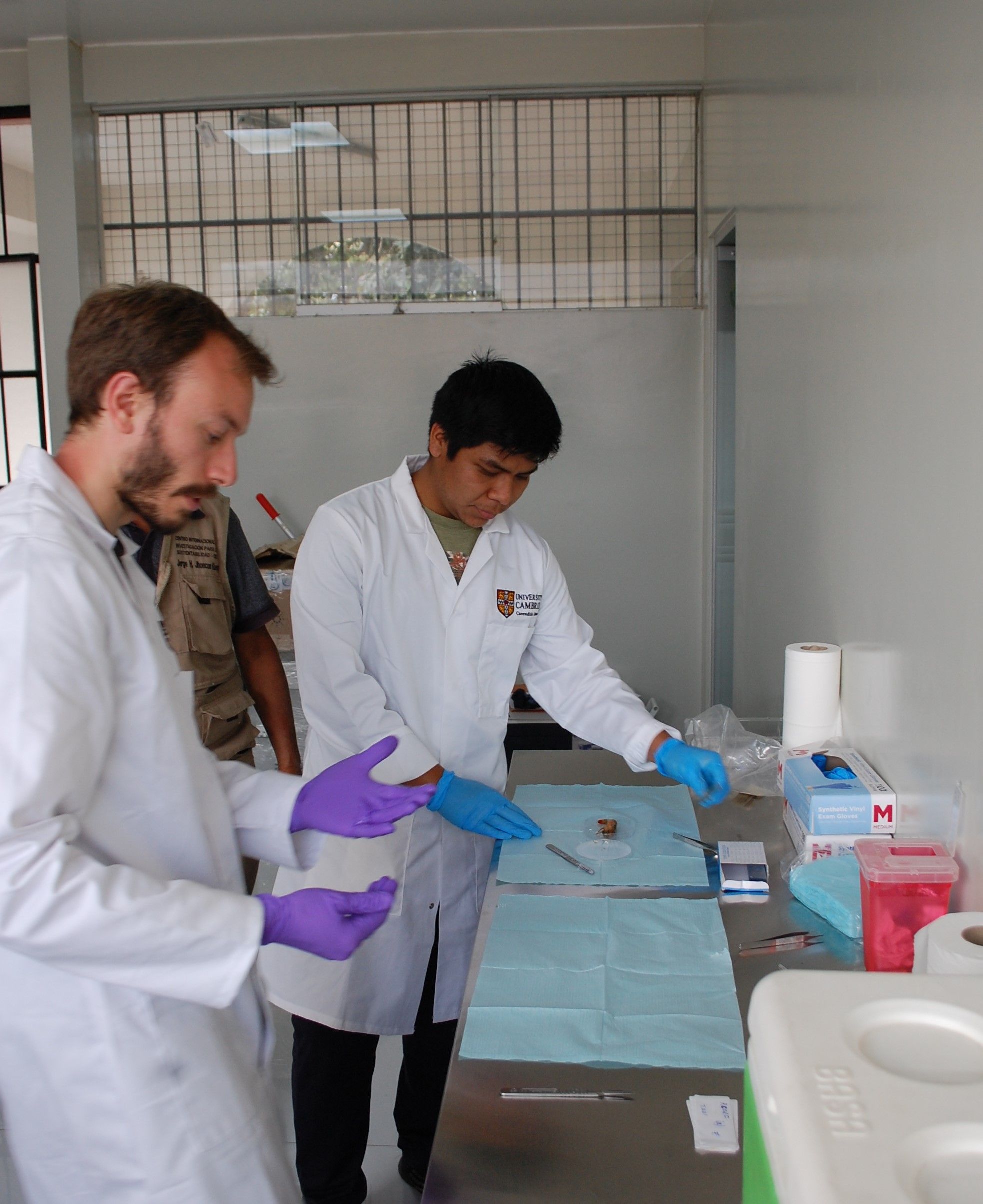Two UNDC students select the shrimp sample. The shrimps are killed following a strict protocol which involves immersing them in two baths of increasing concentrations of ethanol. Only then can the samples be prepared and processed for analysis.
Dos estudiantes de la UNDC seleccionan la muestra de camarones. Los camarones se sacrifican siguiendo un estricto protocolo que consiste en sumergirlos en dos baños de concentraciones crecientes de etanol. Sólo entonces pueden prepararse las muestras y procesarse para el análisis.
Rio Cañete: Shrimp research —
Two UNDC students weigh a shrimp. At each site 10 male and 10 female shrimps are selected and their characteristics measured: overall length, head and tail lengths, and their weight. The difficulties of measuring a non-uniform object suich as the shrimp was discussed with the students.
Dos estudiantes de la UNDC pesan un camarón. En cada lugar de muestreo se seleccionan 10 camerones macho y 10 camerones hembra y se miden sus características: longitud total, longitud de la cabeza y de la cola, y su peso. Se discute con los estudiantes la dificultad de medir un objeto no uniforme como el camarón.
UNDC students helping to prepare the shrimp samples - weighing, measuring and photographing the samples (in the foreground) and extracting the flesh from the shrimp tails (in the background). The flesh (a minimum of 350gr.) was sent to the SGS laboratory, in Lima, for analysis for heavy metals.
Estudiantes de la UNDC ayudando a preparar las muestras de gambas: pesando, midiendo y fotografiando las muestras (en primer plano) y extrayendo la carne de las colas de los camrones (en segundo plano). La carne (un mínimo de 350 gr.) se envió al laboratorio de la SGS, en Lima, para el análisis de metales pesados.
Rio Cañete: Shrimp processing —
UNDC teacher, M.Vilca, prepares the large quantities of distilled water required in the procesing of the shrimp to ensure that the samples are not contaminated and that the highest standards of hygiene are maintained in the laboratory during the processing.
La docente de la UNDC, M.Vilca, prepara las grandes cantidades de agua destilada necesarias en el procesado de los camerones para garantizar que las muestras no se contaminen y que se mantengan los más altos niveles de higiene en el laboratorio durante el procesamiento.

UNDC teacher, M.Vilca, carefully extracts the heptopancreas from a shrimp as H.Lepage (UCAM) and a UNDC student look on. The heptopancreas from the samples were analysed to try to determine the principal diet of the shrimps at each site. In the second photo, a UNAH student takes his turn to extract the heptopancreas from a shrimp after watching others do so.
La docente de la UNDC, M.Vilca, extrae cuidadosamente el heptopáncreas de un camarón mientras H.Lepage (UCAM) y un estudiante de la UNDC observan. Los heptopáncreas de las muestras se analizaron para intentar determinar la dieta principal de los camarones en cada lugar. En la segunda foto, un estudiante de la UNAH hace su turno para extraer el heptopáncreas de un camarón después de ver a otros hacerlo.


Rio Cañete: Acquatic plant processing —
UNDC students identifying and processing a variety of aquatic plants collected from the shrimp collection sites. Shrimps are omnivorous but their diet mainly consists of aquatic plants. An analysis of the plants for heavy metals might help to explain the bioaccumulation of tiny quantities of heavy metals in the shrimps.
Los estudiantes de la UNDC identifican y procesan una variedad de plantas acuáticas recogidas en los lugares de recogida de camerones. Los camarones son omnívoros, pero su dieta se compone principalmente de plantas acuáticas. Un análisis de las plantas en busca de metales pesados podría ayudar a explicar la bioacumulación de pequeñas cantidades de metales pesados en los camerones.
Rio Cañete: Shrimp researchers —
The shrimp research team lunch on …. shrimps (and trout) …. during a break in the days activities.
El equipo de investigación de los camerones almuerza en …. camerones (y trucha) …. durante una pausa en las actividades del día.
